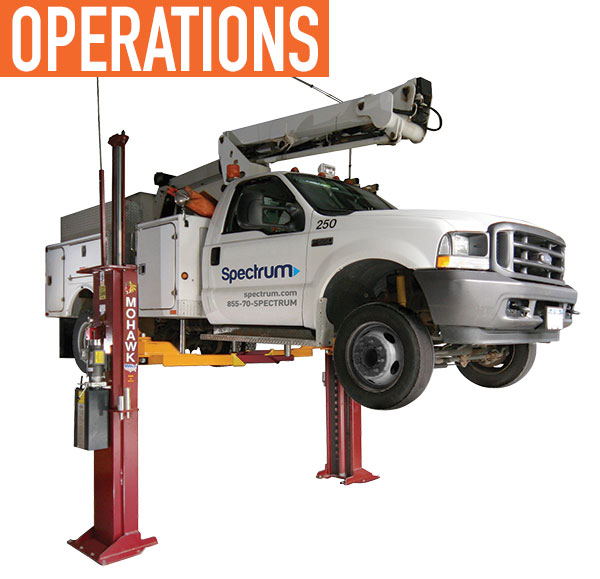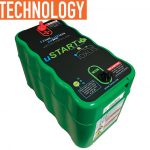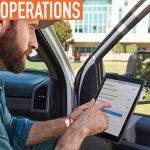What do tires, auto parts, and hand tools have in common? They can all be purchased by your agency using cooperative procurement. Every time a tire is changed or parts installed, there’s likely a vehicle lift used to raise the vehicle to make your shop more productive.
Fleet managers have plenty of challenges operating the fleet. Purchasing the right equipment to operate your garage shouldn’t be one of them. Your job is focused on the fleet, yet sometimes transitioning your needs across the hall to the procurement department becomes a virtual arm wrestling match between fleet and purchasing. Cooperative procurement is the solution.
Cooperative procurement is the fastest method to get what you need, as opposed to spending weeks writing bid specs and the time and expense of a bid. Mike Wenzel of the NASPO ValuePoint cooperative and education outreach team, says “a simple procurement can cost an agency $10,000 while costing considerably more on complex purchases.”
BETTER ALTERNATIVE
These figures account for your time: interviewing potential vendors, advertising bids, responding to pre-bid questions, analysis of the responses, sometimes responding to an unhappy potential respondent, and eventually making an award. Old-style procurement takes time and costs money—which is where cooperative procurement comes into play, and why cooperative purchasing has steadily grown, especially for items purchased only on occasion.
There are several nationwide cooperative procurement tools available to your government fleet; the largest being the NASPO ValuePoint cooperative, made up of all 50 states. NASPO ValuePoint cooperatively bids on different products. While the ValuePoint cooperative is run by all 50 states, the National Joint Powers Alliance (NJPA) is another government agency that offers more fleet related products than ValuePoint. If your state hasn’t adopted the NASPO contract, chances are your agency is already an NJPA member.
For example, your agency is in need of a new garage lift, tire changer, or wheel balancer. Unlike commodities such as fuel, these products are only purchased when your garage expands or should an old lift or tire changer no longer service your current fleet. In a phone interview with the government to government procurement cooperative, NJPA contracting administrator, Kelly McAllister, asks the common-sense question: “If the product has already been competitively bid, competitively awarded, and the awarded vendors have been chosen, then why would an agency spend their time and resources reinventing the wheel and again go out for public bid?”
NJPA has over 260 competitively bid and awarded contracts, per McAllister. There are 55,000 state, city, county, and schools using cooperative procurement and purchasing items from the NJPA group of contracts.
IF IT ISN’T BROKE…
In the example of purchasing a vehicle lift or tire changer, several government contracts are available to agencies. All contracts were competitively bid and awarded and carry a full set of government terms and conditions the vendors must comply with for your shop as a government buyer.
Examples of cooperative contracts include GSA as the federal government, yet this contract is used by many states. When a state adopts a contract, all agencies in that state are able to access the state pricing. Twenty-eight states have adopted the NASPO ValuePoint contract as their state contract. Six states have adopted the NJPA contract on a statewide basis. Finally, some states have standalone state contracts for vehicle lifts.
Regardless of which cooperative or state cooperative contract is used, all city, county, and public agencies can use the established contract. Cooperative procurement law even allows state agencies to use a different contract if the vehicle lift is not on their state’s cooperative contract yet is on another contract. While rare, this practice may be the secret for you getting the right equipment for your shop.
Although vehicle lifts, tire changers, or shop equipment are the products we’ve chosen for the examples, below is a list of cooperative purchasing vehicles that have already gone through competitive bid on a nationwide scale with nationwide volume discounts offered by the vendors:
- National Association of State Procurement Officers, contracting division. www.NASPOValuepoint.org.
- National Joint Powers Alliance: a cooperative procurement agency made up of 55,000 nationwide government agencies. www.NJPAcoop.org.
- The Houston-Galveston Area Council of Governments: a national cooperative with more than 7000 members in 49 states. www.HGACbuy.org.
- Mohawk Lifts Government Pricing Site: an example of a website mandated as part of the terms and conditions of cooperative procurement contracts. The website shows the full set of terms and conditions (whether freight is included) shows volume discounts, shows the awarded contract pricing, lead times for the product, and the ability to have the equipment installed in your facility. www.govlifts.com.
The terms and conditions of each contract vary slightly yet respect the legalities of the procurement process. For example HGAC’s contract requires freight be added as a separate line item. If your agency separates freight and equipment in different accounting areas, the differences in one contract over other contracts could mean your procurement agent can successfully purchase the lift your shop needs versus a purchasing agent buying a lower priced piece of equipment that does not fit your needs.
Part of an electrical cooperative in the US or Canada? The National Rural Electrical Association (NRECA) also serves as a procurement cooperative for volume purchasing for its member electrical co-ops. Similar to government agencies, NRECA members have a sourcing team that develops contracts to supply member needs. Those in rural electric co-ops can also procure vehicle lifts, vehicles, and 90 other contracts to fit the needs of NRECA members. www.nrecacoop.org.
JOIN THE GROWTH
Why the growth of cooperative procurement? Simple. Answers and economics. Per Voight Shealey, the education and outreach director of NASPO ValuePoint: “As more people in a procurement department retire, the needs of the agencies don’t go away.”
Cooperative procurement has grown as a solution on a national scale and is accepted by most all procurement offices at every level of state, city, school, and county government agencies. In using Mike Wenzels logic, if the cost of the combined hours of the procurement are high, and the contract has met all the legal requirements of a competitive bid, then, per Wenzel, “why spend the time, resources, and hours bidding what has already been awarded?”
Cooperative procurement, once called piggybacking another contract, is the method by which one government organization does all the heavy lifting (pun intended), yet all other government agencies benefit from nationwide volume and discounted prices offered on the established contracts. Educated fleet managers who understand and use cooperative procurement achieve better results working with their procurement departments to acquire the equipment they need.
ABOUT THE AUTHOR
Steve Perlstein is the president and government sales manager of Mohawk Lifts. Mohawk is a lift manufacturer and has been involved with cooperative procurement for the past 28 years. In addition to lift sales, Mohawk has spent the last 18 years representing other OEM manufacturers of garage equipment.
_______________________________________________________________________
MODERN WORKTRUCK SOLUTIONS: MARCH 2018 ISSUE
Did you enjoy this article?
Subscribe to the FREE Digital Edition of Modern WorkTruck Solutions magazine.
![]()





